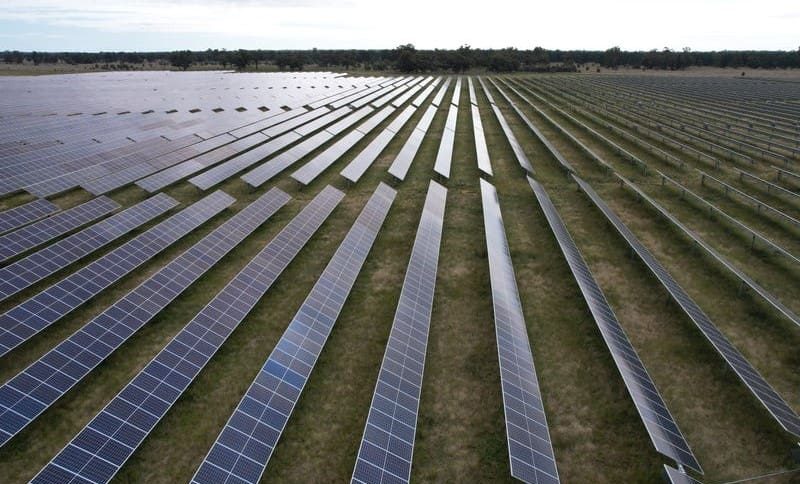
INVESTMENT in renewable energy is on the rise, but in a developing market, it is difficult to gauge how potential purchasers are responding to rural holdings listed with established projects in place.
In this week’s property review, early sales evidence suggests these properties are attracting greater interest and, in some cases, are pushing up values.
With lenders looking at cash flow and debt serviceability, renewable energy projects offer producers an additional income stream to help weather cyclical economic, commodity and climatic conditions.
However, they are not for everyone. A number of property marketing agents (who did not wish to be named) said some clients would not consider buying a property with solar or wind turbines in place.
Depending on the arability of the land, crops can be grown, and livestock can be run under wind turbines, but solar panels limit a property’s cropping capabilities, as well as the ability to run cattle.
When it comes to rural property sales offering renewable energy income, there are two different markets:
- Energy companies seeking prospective sites in the hope of capturing the development upside.
- Rural properties offering a renewable energy lease as part of the sale.
Col Medway, LAWD

Col Medway
LAWD director Col Medway said renewable energy developers were not interested in buying an existing development where a landholder is receiving a rent.
“They are seeking prospective sites largely governed by proximity to existing transmission infrastructure and the remaining capacity on that infrastructure,” he said.
“There may be powerlines running near your farm, but if the infrastructure is already at capacity, then developers won’t consider it.”
Developed sites
Assets offered to the market with a passive rent generating a consistent income attract mostly producer buyers.
Mr Medway said the market would value those farms for their agricultural return and then put a price on the basic income generated by the renewable energy project.
“Compared to solar, wind development has little impact on the agricultural productivity of the land. It is up to prospective buyers to decide what they are willing to pay for that rental income.”
He said the rent for most renewable energy projects could be sold forward.
“The number of buyers paying for that rent has put a market rate on the value of those incomes. Currently, it is sitting at 8.5 percent.”
“This is determined by the market ascertaining the value of the land (based on its agricultural production), followed by a capped rate on the renewable energy lease income.”
Mr Medway said how much a buyer was prepared to pay for the capped rate depended on a number of factors.
“The 8.5 percent can vary depending on the length of the remaining project, the rent review process and the responsibilities at the conclusion of the lease,” he said.
Recent examples: Tubbo Station
In August 2021, Hewitt Cattle Australia, backed by Canada’s Public Sector Pension Investment Board, paid more than $40 million for the historic Tubbo Station in New South Wales’ Riverina.
The 14,875ha holding was sold on a walk-in, walk-out basis, including plant and equipment, 19,402 sheep and a 539ha solar farm.
The following year, Hewitt Cattle (the landlord) listed the long-term lease (rental income) of the solar power generation plant (considered one of Australia’s largest) with direct connection to the power grid.
The well-contested process was secured by a renewable energy company which is understood to have paid between $9.5 and $10 million for the triple net lease, over a 35-year term (with 31 years remaining), valued at $582,209 (plus GST) per annum and subject to an annual CPI review.
Warrane
Purchasing country for renewable energy (in this case for wind turbines) is the exception, not the rule.
In fact, the sale of Warrane in July last year was one of the first major examples of energy companies choosing to own land and lease the agricultural operations.
Origin Energy paid a staggering $48.13 million bare for the 7690ha beef cattle, prime lamb and Merino wool enterprise, located 18km north-west of Armidale.
Warrane sits within the New England renewable energy zone (REZ) of northern New South Wales and Origin’s plan to build a wind farm on the large-scale property certainly offered neighbouring farms a nice buffer.
When Warrane was sold, Mr Medway was unable to the disclose the price paid, describing it as an extremely strong result.
“The property was strongly chased by several renewable energy companies recognising the potential of the property and as a result, it achieved well and truly above agricultural values.”
Now on the public record, Mr Medway said the $48 million plus result achieved 55pc above the initial price guide provided to the market.
“This premium is out of the box and the highest I have seen in the market, indicating that it may not be repeatable,” he said.
Sam Triggs, Inglis Rural Property
Inglis Rural Property agent Sam Triggs reports good inquiry from renewable energy companies looking at potential sites for solar energy, wind power and battery storage.

Sam Triggs
“The most desirable are rural properties located close to main power infrastructure, such as transmission lines,” he said.
“Most energy companies or intermediaries (who source country and on-sell it) are seeking option agreements rather than an outright sale.”
Mr Triggs said his agency has been approached by multiple parties to find landowners interested in engaging in lease agreements.
“Before putting any capital forward, most energy companies (or intermediaries) want to option the land, gain development approval to build the infrastructure and have the support of the local community.”
“As a result, many landowners are being paid attractive option fees while these companies conduct modelling and due diligence on site suitability and the likelihood of a DA approval,” Mr Triggs said.
Beef Central was told the approval process can be a long journey (five to ten years) and the process of building the infrastructure is disruptive to the farm business.
Mr Triggs said when selling a property with wind turbines, a discounted cash flow analysis is conducted to establish a net present value (NPV) of the income stream.
“The NPV is promoted during the marketing campaign and helps to sell a property. For instance, the passive income stream generated by Gundowringa’s wind turbines attracted 12 to 15 inspections.”
“In the end, competitive bids were submitted by five interested parties ranging from locals, entities from the Northern Hemisphere and out-of-area Australian producers looking at running the property remotely,” Mr Triggs said.
Example: Gundowringa
In March, a Sydney investor paid north of $12 million for the historic 825ha Gundowringa, 17km from Crookwell and 32km from Goulburn, on the Southern Tablelands of New South Wales.
Running between 9000 to 11,000DSE, the property’s profitability was underpinned by a diversified income stream, Sam Triggs said.
With 13 wind turbines and a sub-station, there is a (pending) 30-year lease agreement with an income stream of $226,800 per annum CPI indexed.
Mr Triggs said the purchaser, who hadn’t previously considered wind turbines, viewed them as an added bonus.
“It is difficult to determine or specifically quantify how much of a premium was paid for the diversified income, but the turbines certainly generated more competition and a stronger end result.”
Mr Triggs explained that over the life of that project, an NPV at a discounted rate of about 10pc on that income stream would generate a lump sum monetary amount of about $3 million in terms of value today.
“While no-one was prepared to pay that $3 million on top of the land value, we believe a slight premium was achieved.”
Current listings with renewables:
Runnymeade Aggregation:
In March, an aggregation of five Northern Tablelands grazing properties with potential for wind turbine income was listed in a region identified by the NSW Government as an optimal location to generate renewable energy.
The 4468ha Runnymede Aggregation near Yarrowyck, 36km from Uralla and 42km west of Armidale, operates as a cattle and sheep trading enterprise but would also suit a breeding enterprise estimated to run 20,000DSE.
Prior to listing, the vendors had signed a lease agreement with an energy provider (commonly known as EDF – a French multinational electric utility company owned by the French government).
The aggregation has the potential to host nine wind turbines as part of the New England Renewable Energy Zone (REZ), with applications lodged and awaiting approval.
Runnymede failed to sell following an expressions of interest campaign, despite LAWD agent George Barton fielding inquiry from energy providers (who considered a joint venture arrangement), producers and investors (who could see the potential income if the project was eventually approved on top of the grazing enterprise).
In the wake of the Warrane sale, would there have been a greater thirst from other wind developers to acquire the Runnymede Aggregation had it not already been under contract?
“It is difficult to say in this revolving market,” Mr Triggs said.
Walwa Homestead
Earlier this year, the home of the Walwa Merino Stud on New South Wales’ Southern Tablelands returned to the market with a reduced price of $13.7 million.
The 1046ha Walwa Homestead offers a supplementary income from a renewable energy lease generated by 13 turbines (part of the Gunning Wind Farm) which expires in 2038.
Situated near Gurrundah, 28km north of Gunning, the property boasts a string of prominent owners including sheep breeder Sir Walter Merriman (grandfather of former AWI chair Wal) and Ros Packer’s parents Dr Stephen and Phyllis Weedon.
Walwa Homestead has a long history of producing wool, lamb and beef, with a carrying capacity of 8090 dry sheep equivalents. It is being sold by LAWD in conjunction with Delta Agribusiness.

HAVE YOUR SAY